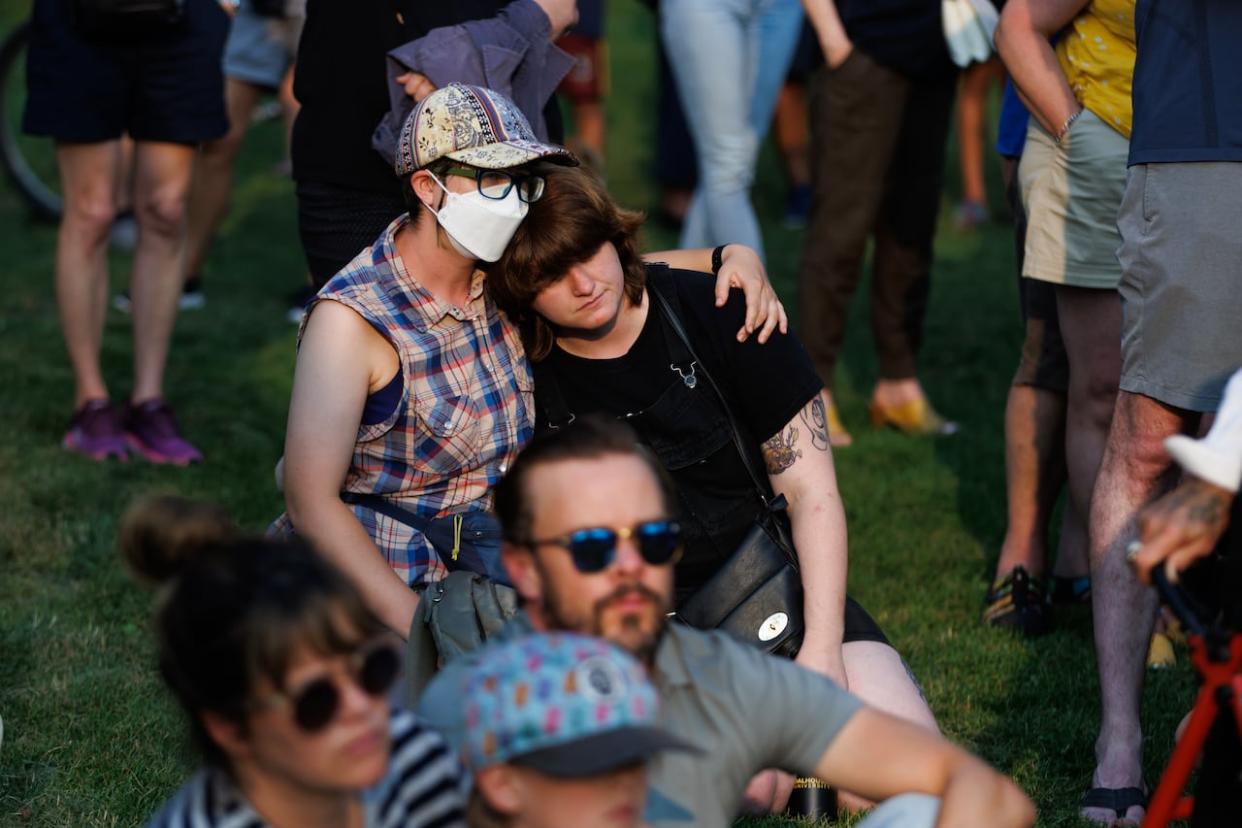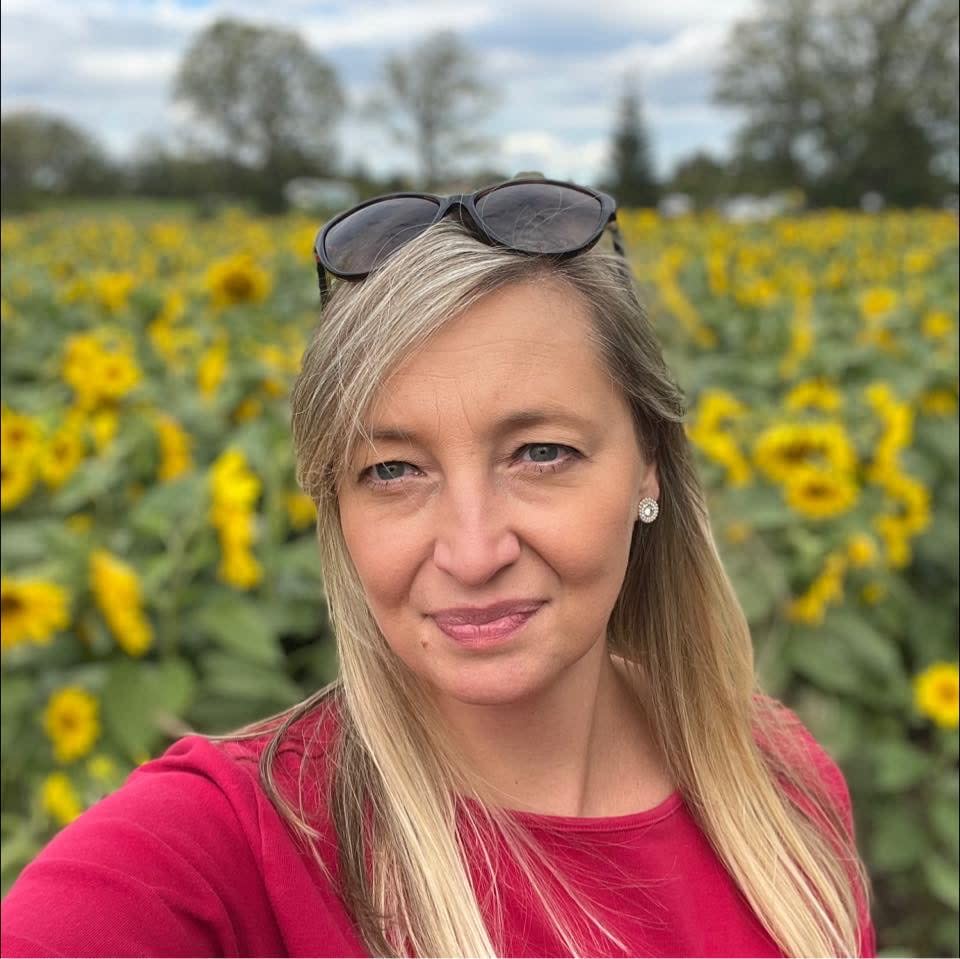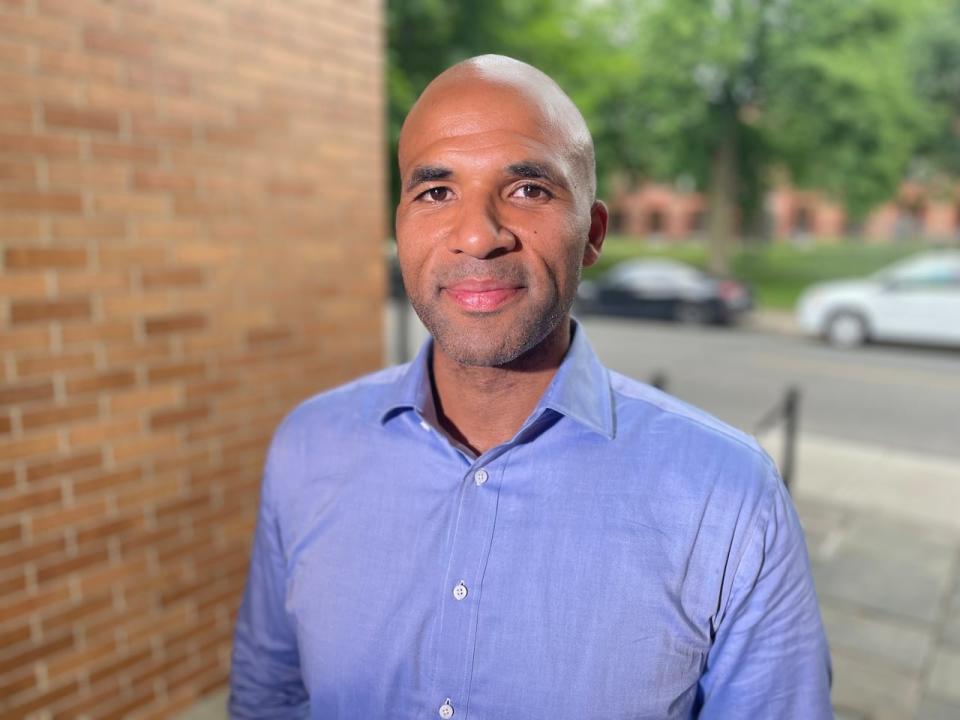Toronto's gun violence is trending down despite recent daytime shootings, data shows

Despite a pair of recent daytime shootings in Toronto that have left the city shaken, statistics show gun violence in the city has in fact decreased from the year before.
Deaths and injuries due to shootings are down 25 per cent compared to this time last year, according to crime data from Toronto Police Services. In 2022, 88 people had been injured or killed as a result of gun violence by July 16. By the same date in 2023, 66 people were injured or killed.
The data also shows that by July 16, 2022, there were 221 total shootings and firearms discharges. So far this year, there have been 158.
"That's not to say there aren't parts of the city that have problems related to gun violence, these are often neighbourhoods experiencing social deprivation," said Akwasi Owusu-Bempah, an associate professor of sociology at the University of Toronto who specializes in race, social inequity and criminal justice.
"The daylight shootings, and other violent incidents on our transit system, we need to think about these in context."
On July 7, 44-year-old mother Karolina Huebner-Makurat, also known as Caroline, was killed after a stray bullet from a gunfight struck her while she walked at Queen Street East and Carlaw Avenue in Leslieville. In Scarborough, two alleged shooters and a bystander were injured in a gun fight over the weekend.
But while the violence has increased anxiety for many in the city, academics and advocates maintain Toronto is a generally safe city and say addressing the root causes of gun violence should be the priority.

Huebner-Makurat, a 44-year-old mother of two, was killed on July 7. (Submitted by Adrian Makurat)
Owusu-Bempah said when issues plaguing neighbourhoods that have been neglected start to spill out into areas less familiar with gun violence, that draws attention, he said.
"We need to consider that we've just come out of a global pandemic. We have increased rates of homelessness and mental health that are present that many people are seeing, that might lead them to question their personal safety," said Owusu-Bempah.
"Toronto continues to be a very safe city by historical comparisons, by national comparison and by international comparisons," he said.
National decline in firearm-related crime
It's also important to understand that year-to-year comparisons do not illustrate long-term trends. Averages need to be examined over five, 10 and 20 year periods, said Owusu-Bempah. On top of that, Toronto's population continues to grow, so the rate of shootings should also be looked at in that light, he said.

Akwasi Owusu-Bempah is a professor at the department of sociology at the University of Toronto. (Oliver Walters/CBC)
Nationally, there's been a decline in firearm-related crime driven by a drop in incidents specifically in Toronto over the last two years, according to Statistics Canada.
The federal government attributes the declines due to fewer robberies — a shift it says could be the result of pandemic-related measures that have caused retail businesses to change models, with fewer storefronts.
Scarborough resident Louis March, founder of the advocacy group Zero Gun Violence Movement, said declining numbers could mean efforts to keep people out of gangs are working.
Last summer, the federal government provided Toronto with $12.3 million to address gun violence, which was allocated to community-led projects to prevent young people from joining gangs.
But this is no time to celebrate, said March. "When you have a daylight shooting…it's concerning. What it's showing is that we still need to do some serious work in terms of leadership," he said.
Experience needs role in policy making: professor
That's why it's important for the public to understand that general year-to-year statistics will not tell the whole story, said Adam Ellis, an assistant professor at the University of Waterloo, who specializes in street-related violence, trauma and criminology.
To truly understand the layers of how gun violence is affecting communities in Toronto, those with lived experience of violence in neighbourhoods need to lead research on the issue, he said in an interview with CBC Toronto. He wants to see more pathways for people who have lived through gun violence to enter academia and policy making.

Adam Ellis, an assistant professor at the University of Waterloo, says those with lived experience of street violence need to play a larger role in research and policy making. (Submitted by Adam Ellis)
Ellis himself grew up in Toronto's west-end and ended up in a gang. He says a lack of support and security from systems like police and school caused him to feel connected to his "street family", which he eventually was able to get out of, he described in an op-ed he penned for CBC in 2019.
Ellis says police often attribute decreases in violence to their work— but he encourages the public to be critical of that.
In a statement to CBC Toronto, Toronto police said that while gun violence was steadily increasing since 2015, it has trended downwards since 2019 and overall solved rates have increased. The force attributed this to the work of officers and partner agencies across the GTA.
"Most shootings are targeted and isolated, which speaks to the gang culture piece, where we need to continue to work with agencies at all levels to identify root causes," it said, citing the work of its gang prevention task force to suppress gang and gun activity.
In March, Toronto launched its Youth Violence Prevention Grant that will give funding to community agencies that work to assist youth most vulnerable to violence or other serious crime. In 2021, the city also launched its 10-year SafeTO plan that lists reducing violence and investing in neighbourhoods among its goals.
But those programs need to involve more people who understand what it's like to live with the threat of violence, said Ellis. "This is what I'm always telling people…you don't even know the history of these communities," he said.
"There needs to be more people with that lived experience who can get to academia to do some of that work, and unpack it," he said.


